Explore why 67% of customers now favor self-service options over human support. Discover key drivers of this trend and the role of AI in enhancing self-service. Slug customers-prefer-self-service-over-human-support

67% of customers now prefer self-service options over speaking with a human representative, according to research from Nuance and Zendesk. This shift isn't just a passing trend. It is a transformation in customer expectations, driven by the demand for speed, convenience, and autonomy. But why?
This article explores the key reasons behind this growing preference for self-service, supported by compelling statistics, real-world examples, and expert insights.
We'll also examine how you can adapt to this shift by using AI-powered tools and automation to enhance customer satisfaction and loyalty.
Self-service in customer support refers to tools and platforms that allow users to resolve their issues without direct interaction with a human agent. These include:
These tools empower users to find solutions quickly and independently.
It's not just about static help pages anymore. Today’s self-service solutions are dynamic, personalized, and powered by cutting-edge AI.
This shift is happening fast. According to a Microsoft report, 90% of customers now expect brands to offer self-service options. The modern consumer’s desire for fuels this demand:
The demand for speed and accessibility is at the heart of the self-service revolution. Today’s customers aren’t willing to tolerate long hold times or service hours that limit when they can get help.

In this instant-gratification era, 88% of customers expect a response within an hour, with 30% demanding answers within just 15 minutes. Self-service solutions address this issue by eliminating wait times and providing immediate access to information and problem-solving tools.
This demand for immediacy is even more pronounced in our increasingly connected world. Research shows 40% of customers who contact call centers first attempt to resolve their issue via self-service. Whether it’s 2 AM or a holiday, customers value the ability to access support on their terms, at any time.
A key shift in customer behavior is the growing desire for autonomy. A striking 81% of customers try to solve issues on their own before reaching out to a live representative. This reflects a broader trend where customers want to handle problems independently, without depending on agent availability or expertise.
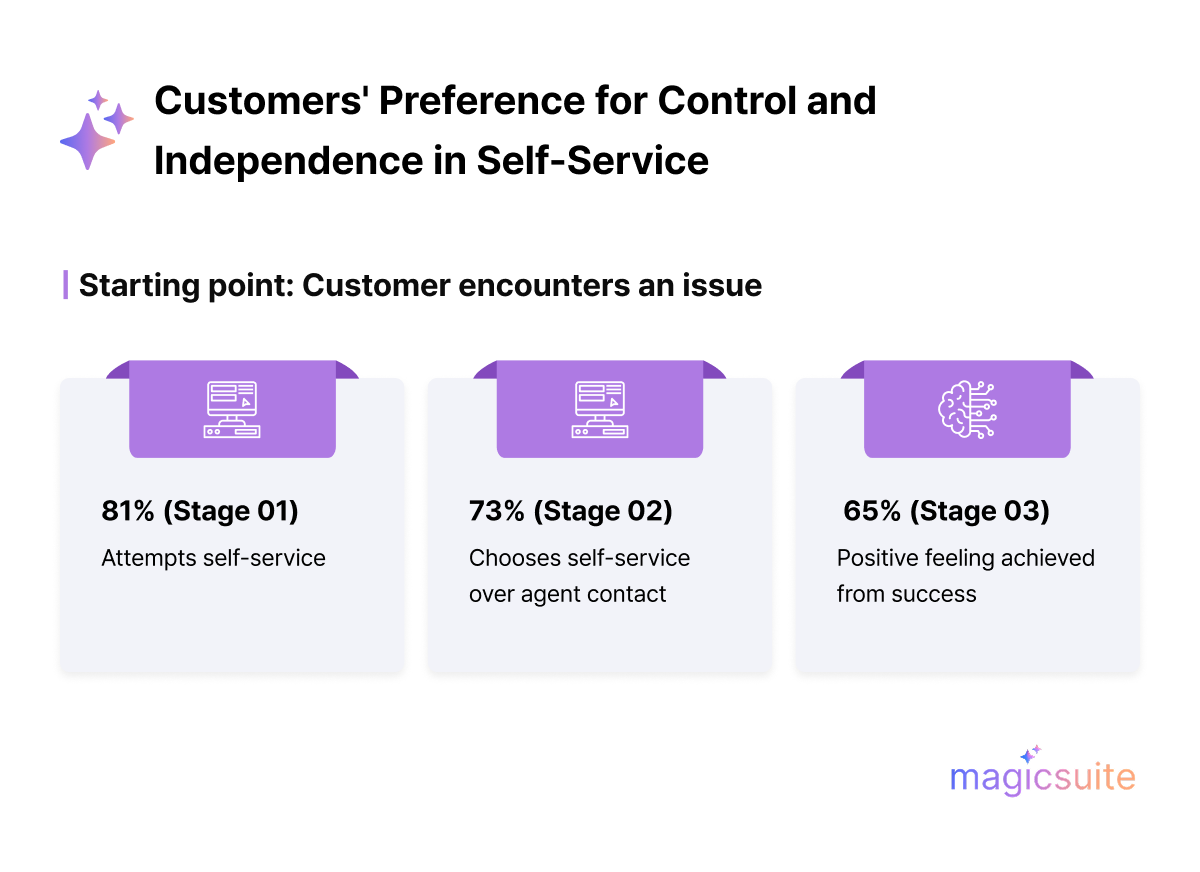
Moreover, 73% of customers prefer the ability to resolve issues independently. This isn’t about avoiding human interaction entirely; it’s about choice and control. When self-service works, it offers more than just convenience; it fosters a sense of accomplishment.
65% of Americans feel good about themselves when they solve a problem independently, seeing it as a win both for them and the company involved.
Traditional customer service often falls short, driving many customers to seek out self-service alternatives. Issues like long wait times, repeating information multiple times, and inconsistent service are common pain points.
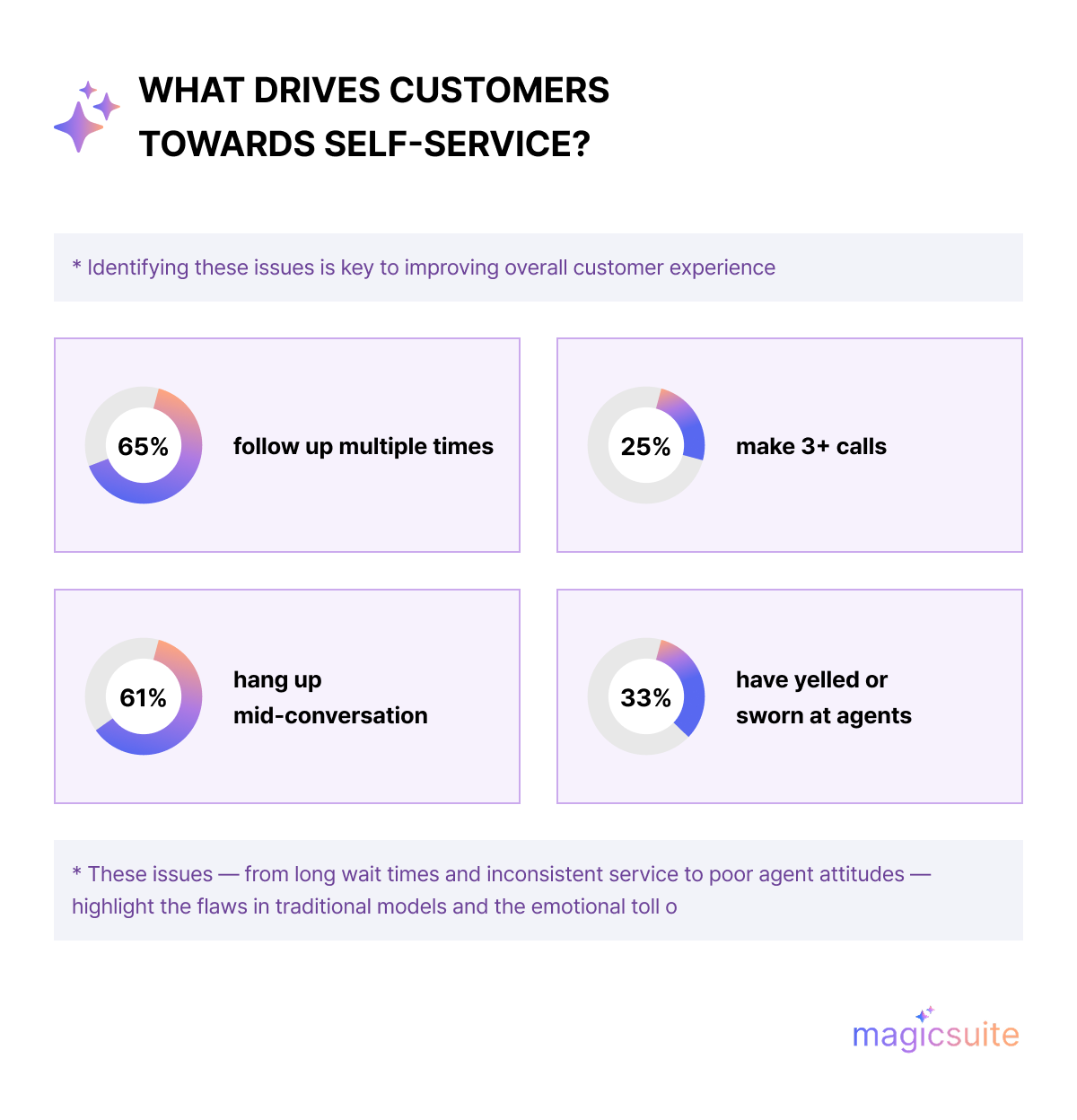
The statistics speak volumes: 65% of consumers report having to follow up multiple times to resolve a problem, and 25% need to make three or more calls to do so. These repeated interactions contribute to rising frustration and highlight the flaws in traditional support models.
The emotional toll of poor service is also significant. These calls for a more reliable and consistent support model, and self-service fills that gap with efficiency and reliability.
A powerful 91% of customers say they’d use a knowledge base if it met their specific needs. AI chatbots and virtual assistants are changing self-service from simple information retrieval to engaging, conversational interactions. AI-driven websites experience a notable 23% increase in conversion rates, and these systems resolve tickets 18% faster, achieving a 71% successful resolution rate.
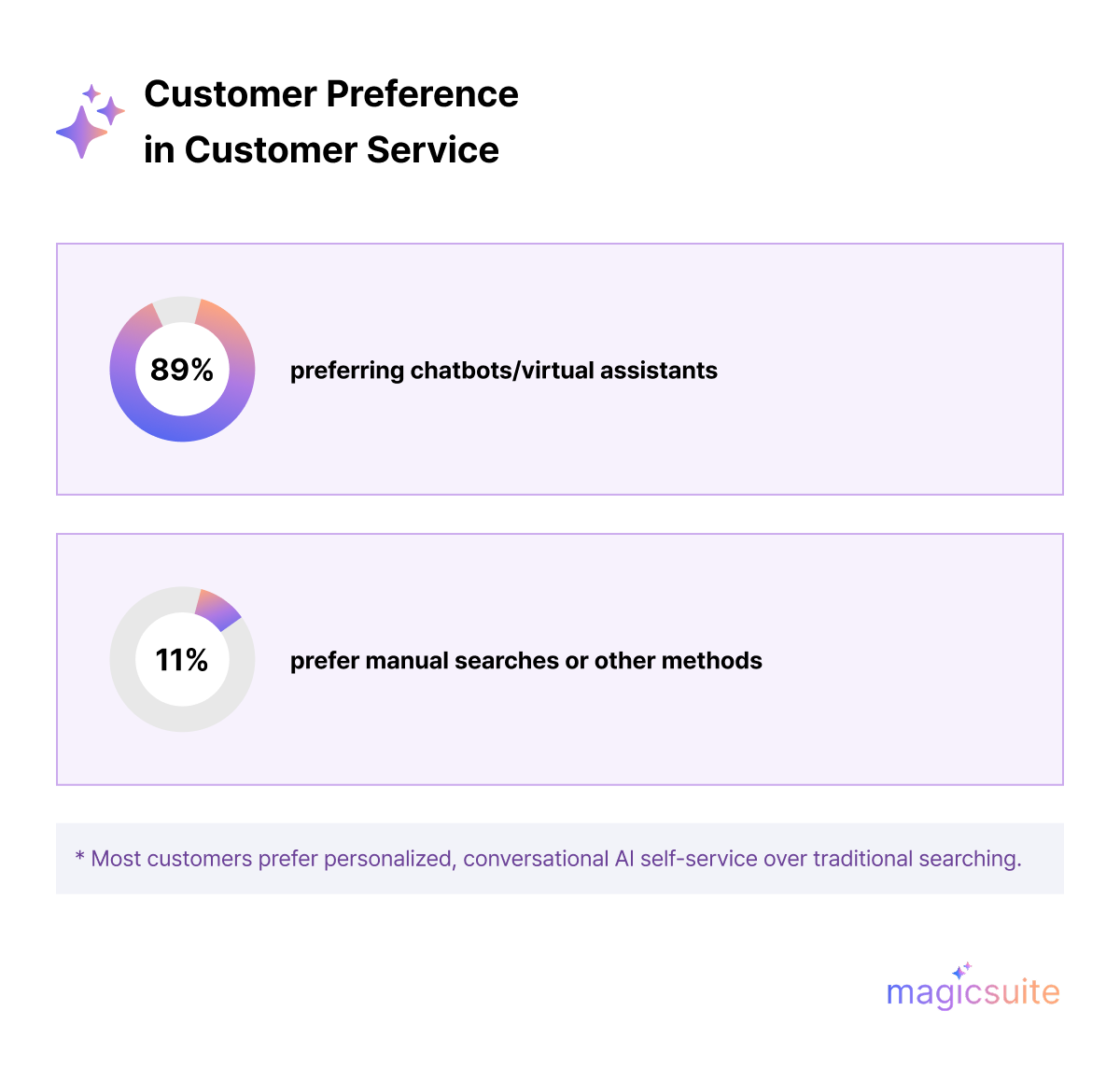
What makes this even more impressive is the level of personalization AI now offers. These systems understand customer context, past interactions, and preferences. 89% of consumers prefer chatting with virtual assistants to search through pages on their own.
The digital age has created customers who expect fast, tech-driven solutions. 66% of shoppers prefer using self-service technology to interacting with retail associates, and 53% opt for self-checkout when available. This trend extends beyond convenience; it fits with the pace of modern life. Speed is a major selling point for today’s consumers.
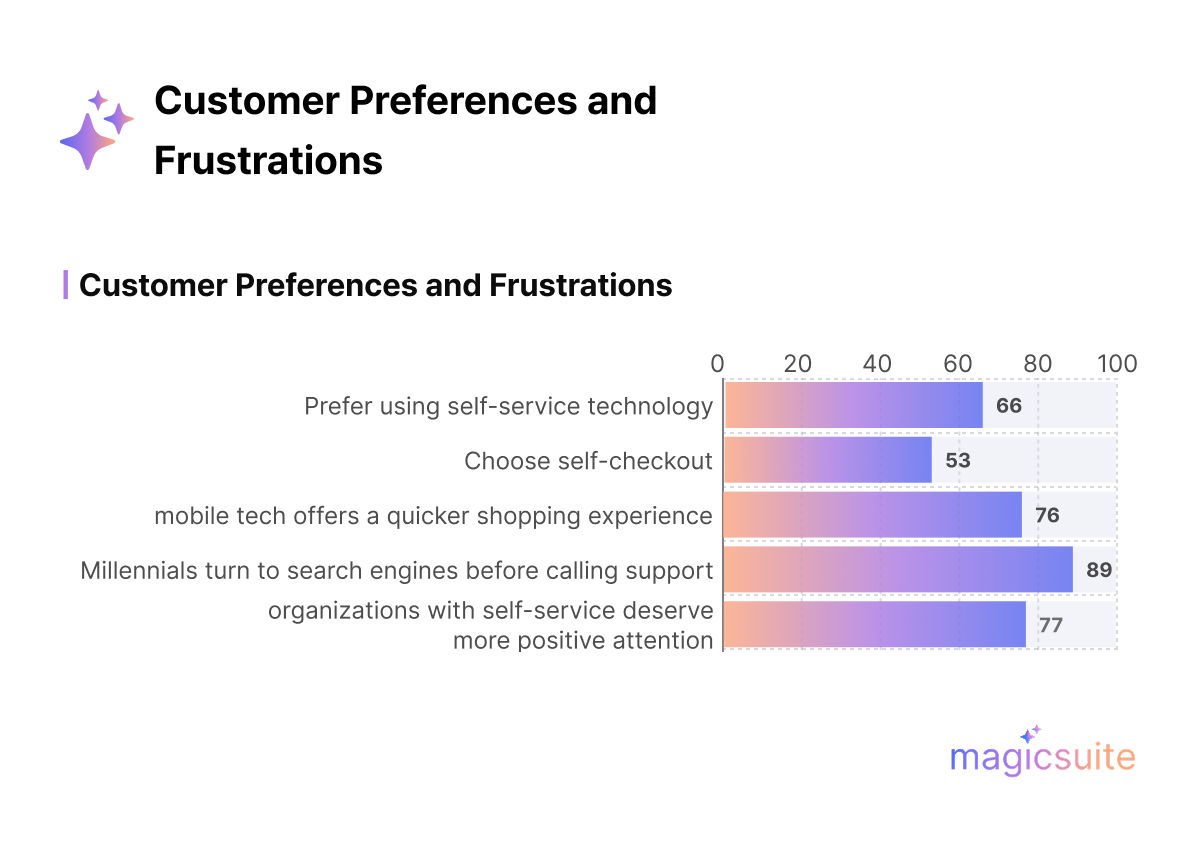
Although this trend is particularly strong among younger demographics, it spans across generations. 89% of millennials will turn to search engines before calling for customer service, showcasing a generation raised on digital-first solutions.
However, this preference isn’t limited to millennials—77% of customers believe that organizations offering self-service options deserve more positive attention. When implemented properly, self-service technologies deliver the speed, convenience, and autonomy that today’s customers crave.
There are still challenges to ensure self-service success. 58% of customers report they sometimes can’t complete their tasks via self-service, and 59% get frustrated when they have to reach out to a live representative after trying self-service.
For self-service to be effective, systems must be both intuitive and comprehensive. The ideal solution integrates seamlessly with human support for more complex issues while handling routine queries accurately and efficiently.
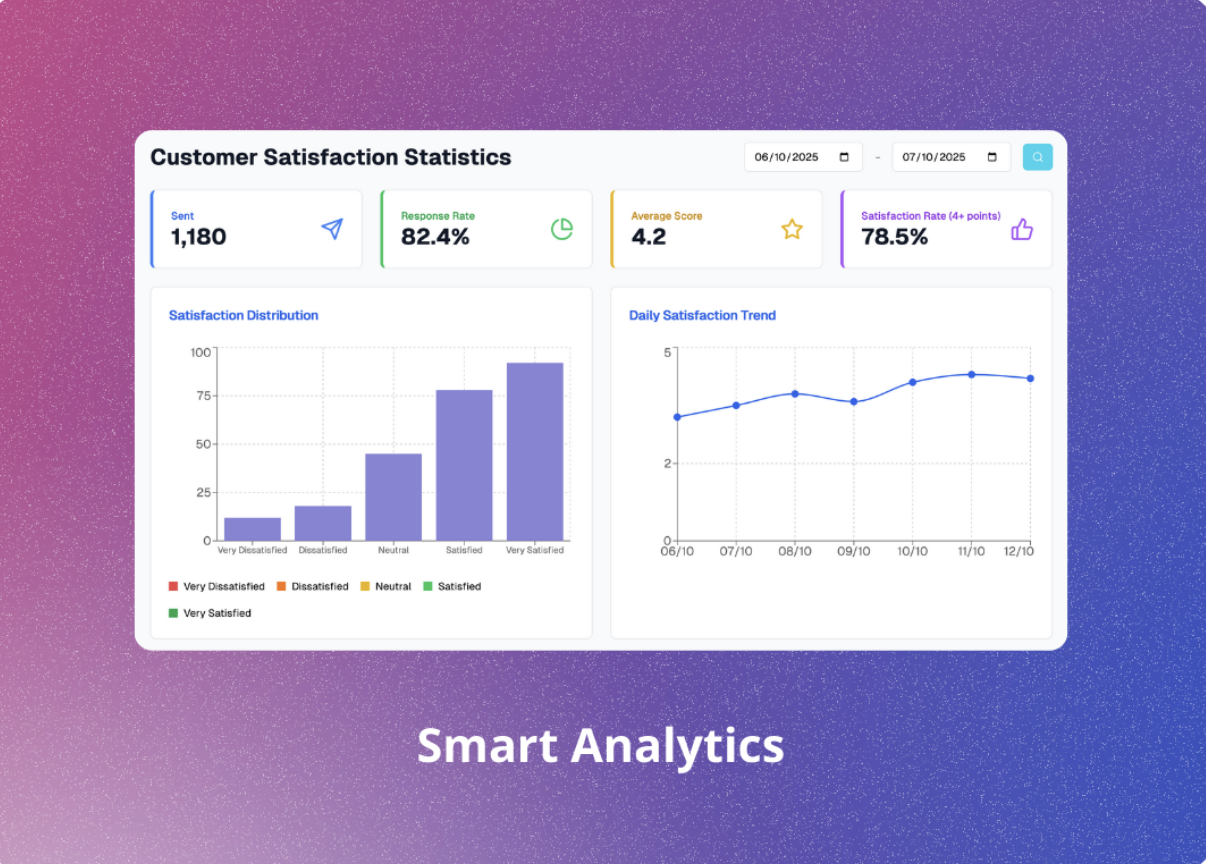
Ongoing optimization is key. MagicTalk helps businesses tackle these challenges by offering continuous optimization through its smart analytics dashboard. This allows companies to track performance, understand customer satisfaction, and pinpoint areas for improvement.
Customers value speed, independence, and convenience. Self-service tools allow them to resolve issues instantly without waiting on hold or repeating themselves.
Popular self-service tools include:
AI enhances self-service by:
No. While self-service handles many queries efficiently, human support remains essential for complex, emotional, or high-stakes issues.
To implement successful self-service, businesses should:

Hanna is an industry trend analyst dedicated to tracking the latest advancements and shifts in the market. With a strong background in research and forecasting, she identifies key patterns and emerging opportunities that drive business growth. Hanna’s work helps organizations stay ahead of the curve by providing data-driven insights into evolving industry landscapes.